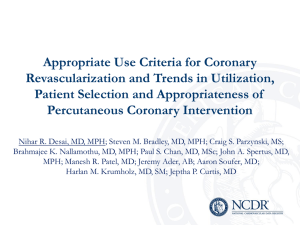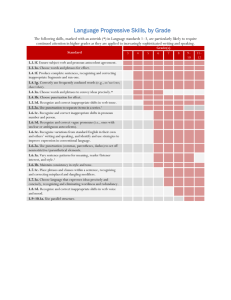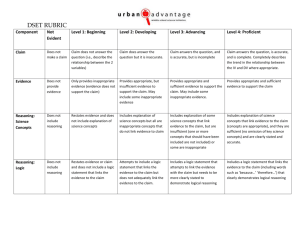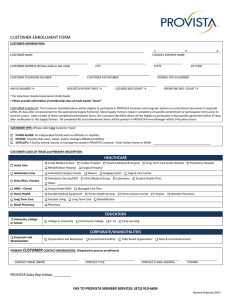APPENDIX Online Table 1. Comparison of Select Patient and
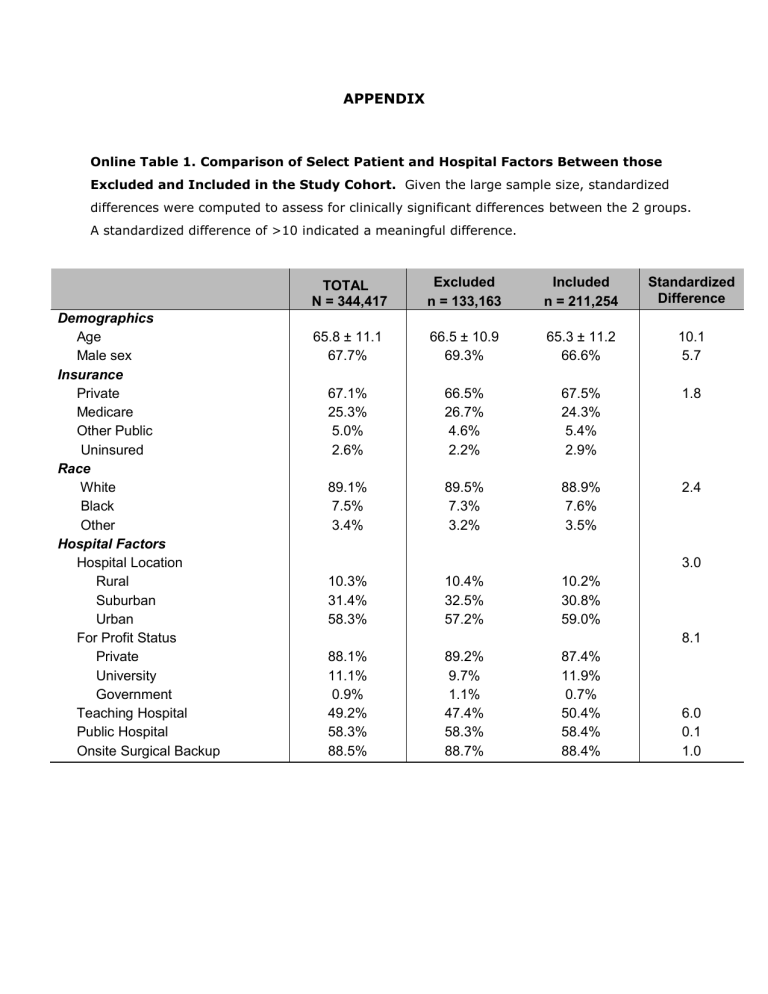
Demographics
Age
Male sex
Insurance
Private
Medicare
Other Public
Uninsured
Race
White
Black
Other
Hospital Factors
Hospital Location
Rural
Suburban
Urban
For Profit Status
Private
University
Government
Teaching Hospital
Public Hospital
Onsite Surgical Backup
APPENDIX
Online Table 1. Comparison of Select Patient and Hospital Factors Between those
Excluded and Included in the Study Cohort. Given the large sample size, standardized differences were computed to assess for clinically significant differences between the 2 groups.
A standardized difference of >10 indicated a meaningful difference.
TOTAL
Excluded
N = 344,417 n = 133,163
65.8 ± 11.1 66.5 ± 10.9
67.7% 69.3%
67.1%
25.3%
5.0%
66.5%
26.7%
4.6%
2.6%
89.1%
7.5%
3.4%
10.3%
2.2%
89.5%
7.3%
3.2%
10.4%
31.4%
58.3%
88.1%
11.1%
0.9%
49.2%
58.3%
88.5%
32.5%
57.2%
89.2%
9.7%
1.1%
47.4%
58.3%
88.7%
3.5%
10.2%
30.8%
59.0%
87.4%
11.9%
0.7%
50.4%
58.4%
88.4%
Included n = 211,254
65.3 ± 11.2
66.6%
67.5%
24.3%
5.4%
2.9%
88.9%
7.6%
Standardized
Difference
10.1
5.7
1.8
2.4
3.0
8.1
6.0
0.1
1.0
Online Table 2. Estimate of Inappropriate PCIs Annually Among Men and Whites
Currently, there are approximately 600,000 PCIs annually in the U.S.
Approximately one-third, or 200,000 of these procedures occur for non-acute indications
From this study, 66.6% of patients were men and 88.9% were white. The inappropriate PCI rate for non-acute indications was 12.2%.
1) Estimate of Additional Number of Inappropriate PCIs in Men
Based on 66.6% of the cohort as men, there would be 133,200 men undergoing non-acute PCIs annually.
Therefore, if there were no differences, there would be approximately 16,250 men with inappropriate non-acute
PCIs (133,200 x 0.122). Our study found that men had an additional 8% increased likelihood of an inappropriate
PCI than women. Therefore, there would be an additional 1300 inappropriate non-acute PCI in men (16,250 x
0.08).
2) Estimate of Additional Number of Inappropriate PCIs in Whites
Based on 88.9% of the cohort as white, there would be 177,800 whites undergoing non-acute PCIs annually.
Therefore, if there were no differences, there would be approximately 21,692 whites with inappropriate nonacute PCIs (177,800 x 0.122). Our study found that whites had an additional 9% increased likelihood of an inappropriate PCI than non-whites. Therefore, there would be an additional 1952 inappropriate non-acute PCI in whites (21,692 X 0.09).
Some of the patients would be both male and white. Therefore, we estimate that at least 2000 men or white patients would have had inappropriate PCI above the rate seen for women and non-white patients.
Online Figure 1.Description of the Most Common Indications (>500 cases) for Inappropriate PCI in Study Sample*
Online Figure 1 (continued)
Online Figure 1 (continued).
* Indications adapted from the publication of the 2009 Appropriate Use Criteria for coronary revascularization (JACC
2009;53:530-553)

